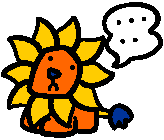
-----------------------------------------------------------------
#55 放飼いの動物からとられたものだけを、食べるのはどうでしょうか?
-----------------------------------------------------------------
「放飼い」という言葉は、(普通言われるところによると)動物が工場
畜産ではなく、自然な行動をする自由が十分にある状態で飼われている
という事を意味します。放飼いの動物から作られる製品は、倫理的に許
容できるものだと考える人もいます。
考慮しなければいけないケースは二通りあります:一つは、放飼いの
動物自身が、消費のために屠殺されるケースです。もう一つは、放飼い
の動物が製品の供給源となるケース(典型的な例は鶏の卵や牛の牛乳)
です。
両方のケースに共通する問題として、「放飼い」という言葉が不当に
使われているという点があります。放飼いとして通っているものの多く
は、一般的な工場畜産よりましだとも言い難い様なものです; 巨大な
「放飼い式の鶏卵農場」に行ってみればその事は明白です(加えて下記
のMTの文章も参照して下さい)
工場畜産による製品は、数多くの病気の原因そのもの、または原因の
一部となっています。栄養学的に見て、放飼いの動物による製品が、そ
うしたものより、ましであるわけでもありません。
放飼いの動物を、食べるために屠殺するケースについては、どうして
そうした不必要な死が他の動物の死よりも、妥当だと言えるのかを、問
うてみる必要があります。このFAQ全体を通して私たちは、動物には
人間の虐待から逃れて生きる権利があるのだと主張してきました。人間
が動物に短期間の幸せな生活を与えたからと言って、人間の残忍な行為
が許されるわけではないのです。
デビッド・カウレス・ハマーは、その点について次の様に述べていま
す:
「動物がその自由を買うために、自らの命を差し出さなければならない
などという考えは、道徳的にみて馬鹿げている」
あるいは、#13の最後で述べた夫婦の例があります。彼らの赤ん坊
は「放飼い」で育てられたんだから、食べても問題ないということにな
るんでしょうか?
放飼いの動物が製品の供給源となるケースについては、少なくとも四
つの問題点を指摘することが出来ます。
1)食糧資源の使い方としてはなお、非効率的である
2)なおも環境破壊の原因となる
3)「生産不能」となった動物は、すぐさま殺されることになる
4)動物の補充をする必要がある;したがって、生産をすることのない、
オスは殺されるか、工場式農場に送られる(この場合、最も悲惨な
運命にあるのは乳牛から生まれたオスの子牛である:その多くは子
牛肉の生産工程にまわされることとなる)
BRO
放飼いの鶏の卵のどこがいけないのでしょうか? 卵を産むめんどり
を繁殖する為には、有精卵が必要ですが、孵化した卵の半分からはオス
のひよこが生まれます。そうしたひよこは(ガスや圧死や窒息や減圧や
溺死などの手段で)すぐに殺されてしまうか、「食用の鶏」として、
(普通はブロイラー飼育場で)育てられ、「経済的な」体重に達すると
すぐさま屠殺されることになります。
したがって、庭や農場で地面をほじくりかえしている、めんどり(も
し取引をすることができるのなら、地代は自分の無精卵で払うことにな
るのでしょう)と同じ数だけのおんどりが、ブロイラー飼育場で苦痛を
耐え忍んでいるか、すでに屠殺されてしまったか、不用なものとして殺
されたかしているのです。イギリスだけで毎年、3500万羽の生まれ
たばかりのオスのひよこが殺されています。殺されたひよこの大部分は、
肥料として使われるか埋め立て式ゴミ処理場に捨てられます。
めんどりは産む卵の数が少なくなってくると(通常2才すぎ位で。鶏
の平均寿命は5〜7年)すぐさま殺されます。
加えて放飼いということになっている場所の多くが、実際には放飼い
と言える様なものではないことも知っておいて下さい; それは、外に
出ることも可能というだけの巨大な小屋に過ぎません。餌も照明も小屋
の中にしかないので、あえて外に出ようとする鶏はほとんどいないので
す。
MT
参照:
#13、
#49、
#50、
#52

...............



-----------------------
#55 Can't we just eat free-range products?
-----------------------
The term "free-range" is used to indicate a production method in which the
animals are (allegedly) not factory-farmed but, instead, are provided with
conditions that allow them to fully express their natural behavior. Some
people feel that free-range products are thus ethically acceptable. There
are two cases to be considered: first, the case where the free-range animal
itself is slaughtered for use, and second, the case where the free-range
animal provides a product (typically, hens providing eggs, or cows providing
milk).
Common to both cases is a problem with misrepresentation of conditions as
"free-range". Much of what passes for free-range is hardly any better than
standard factory-farming; a visit to a large "free-range egg farm" makes
that obvious (and see MT's comments below).
Nutritionally, free-range products are no better than their factory-farmed
equivalents, which are wholly or partly responsible for a list of diseases as
long as your arm.
For the case of free-range animals slaughtered for use, we must ask why
should a free-range animal be any more deserving of an unnecessary death than
any other animal? Throughout this FAQ, we have argued that animals have a
right to live free from human brutality. Our brutality cannot be excused by
our provision of a short happy life. David Cowles-Hamar puts it this way:
"The suggestion that animals should pay for their freedom with their lives
is moral nonsense." Another thing to think about is the couple described
at the end of question #13. Their babies are free-range, so it's OK to
eat them, right?
For the case of products from free-range animals, we can identify at least
four problems: 1) it remains an inefficient use of food resources, 2) it is
still environmentally damaging, 3) animals are killed off as soon as they
become "unproductive", and 4) the animals must be replaced; the nonproductive
males are killed or go to factory farms (the worst instance of this is the
fate of male calves born to dairy cows; many go for veal production).
BRO
What's wrong with free-range eggs? To get laying hens you must have
fertile eggs and half of the eggs will hatch into male chicks. These are
killed at once (by gassing, crushing, suffocation, decompression, or
drowning), or raised as "table birds" (usually in broiler houses) and
slaughtered as soon as they reach an economic weight. So, for every
free-range hen scratching around the garden or farm (who, if she were able to
bargain, might pay rent with her daily infertile egg), a corresponding male
from her batch is enduring life in a broiler house or has already been
subjected to slaughter or thrown away to die. Every year in Britain alone,
more than 35 million day-old male chicks are killed. They are mainly used for
fertilizer or dumped in landfill sites.
The hens are slaughtered as soon as their production drops (usually after
two years; their natural life span is 5-7 years). Also, be aware that many
sites classified as free-range aren't really free-range; they are just
massive barns with access to the outside. Since the food and light are
inside, the hens rarely venture outside.
MT
SEE ALSO: #13, #49-#50, #52




